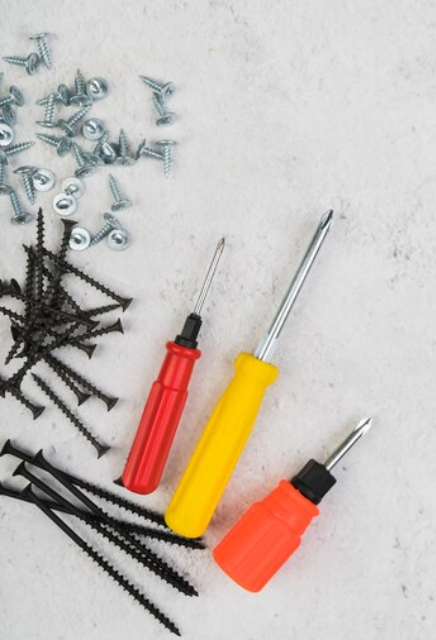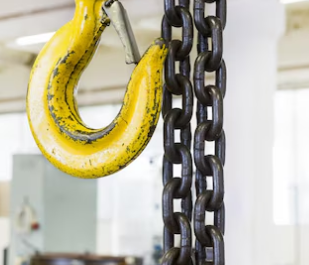Safety Talk on Hand Tools: Screwdrivers
Screwdrivers are one of the most commonly used hand tools in various industries and households. Their simplicity can lead to an underestimation of the potential hazards associated with improper use. This safety talk will explore critical aspects of screwdriver safety, from selecting the right tool for the job to maintenance and proper usage.
1. Importance of Screwdriver Safety
Screwdrivers may appear harmless, but their misuse can lead to injuries such as cuts, punctures, and even eye damage. Adhering to safety practices can:
- Reduce workplace injuries.
- Enhance efficiency and productivity.
- Prolong the life of the tool.
- Prevent damage to workpieces and fasteners.
2. Types of Screwdrivers and Their Applications
Understanding the different types of screwdrivers is the first step toward safe usage:
- Flathead (Slotted): Suitable for screws with a single slot.
- Phillips: Designed for cross-shaped slots.
- Torx: Star-shaped head for high torque applications.
- Hex (Allen): Fits screws with a hexagonal recess.
- Precision Screwdrivers: Used for delicate work like electronics and watches.
- Insulated Screwdrivers: Essential for electrical work to prevent shocks.
Using the correct type of screwdriver for the specific fastener minimizes slipping, stripping, and potential injuries.
3. Key Safety Guidelines
a. Selection of the Correct Screwdriver
- Match the screwdriver tip size and shape to the fastener.
- Avoid using undersized or oversized screwdrivers, as they can damage screws or cause slipping.
b. Inspect the Screwdriver Before Use
- Check for cracks or chips in the handle.
- Ensure the blade is not bent or worn out.
- Verify that insulated screwdrivers are not damaged when working with electricity.
c. Proper Handling Techniques
- Always hold the screwdriver by the handle, not the shaft.
- Use the palm of your hand for steady pressure and avoid over-tightening screws.
- Ensure a firm grip to prevent the screwdriver from slipping.
d. Work Area Preparation
- Ensure the workpiece is stable and securely clamped.
- Keep the work area clean to avoid distractions and slipping hazards.
- Use adequate lighting to see clearly.
e. Avoid Improper Uses
- Never use a screwdriver as a chisel, pry bar, or punch.
- Do not hammer on the screwdriver handle unless it is designed for striking.
- Avoid using a screwdriver with oily or greasy hands, as this increases the risk of slipping.
4. Maintenance and Care
Proper maintenance extends the life of the tool and ensures safe operation.
- Cleaning: Wipe the blade and handle after each use to remove dirt and grease.
- Storage: Store screwdrivers in a designated toolbox to prevent damage and reduce clutter.
- Sharpening: For flathead screwdrivers, use a fine file to maintain the blade’s edges.
- Replacement: Discard screwdrivers with damaged tips or handles immediately.
5. Personal Protective Equipment (PPE)
Using appropriate PPE reduces the likelihood of injuries:
- Safety Glasses: Protect eyes from flying debris, especially when screws are under tension.
- Gloves: Provide a better grip and protect against cuts, but ensure they do not hinder dexterity.
- Non-Slip Footwear: Prevent slipping when working in environments with unstable footing.
6. Common Injuries and How to Prevent Them
a. Cuts and Punctures
- Cause: Slipping off the screw or improper handling.
- Prevention: Use the correct screwdriver and apply consistent pressure.
b. Hand Strain
- Cause: Over-tightening screws or prolonged use.
- Prevention: Use ergonomic screwdrivers and take frequent breaks.
c. Eye Injuries
- Cause: Flying debris or broken screwdriver tips.
- Prevention: Always wear safety glasses.
d. Electrical Shocks
- Cause: Contact with live wires while using non-insulated screwdrivers.
- Prevention: Use insulated screwdrivers rated for electrical work.
7. Special Considerations for Electrical Work
When working near electrical circuits, additional precautions are necessary:
- Use screwdrivers with insulated handles that meet the required voltage rating.
- De-energize circuits whenever possible before starting work.
- Never use a damaged insulated screwdriver, as it can compromise safety.
8. Ergonomics and Work Efficiency
Proper ergonomic practices not only improve safety but also increase efficiency:
- Choose screwdrivers with cushioned, non-slip handles to reduce hand fatigue.
- Opt for tools with a suitable length and diameter for the task to minimize strain.
- Use powered screwdrivers or drills for repetitive tasks to prevent overexertion.
9. Training and Awareness
Educating workers about screwdriver safety is vital:
- Conduct regular training sessions on proper tool use and maintenance.
- Use visual aids and demonstrations to reinforce best practices.
- Encourage reporting of damaged tools or unsafe conditions.
10. Real-World Examples of Accidents
Analyzing real incidents can underscore the importance of safety:
- Incident 1: A worker suffered a puncture wound when the screwdriver slipped. Lesson Learned: Always secure the workpiece and use the correct tool.
- Incident 2: An electrician received an electric shock from a non-insulated screwdriver. Lesson Learned: Only use insulated tools for electrical tasks.
11. Company Policies and Safety Standards
Adhere to organizational safety policies and relevant standards such as:
- OSHA Standards (Occupational Safety and Health Administration): Ensure compliance with regulations on tool safety.
- ANSI Standards (American National Standards Institute): Follow guidelines for tool quality and usage.
12. Regular Inspections and Audits
Implement a schedule for tool inspections to identify potential hazards:
- Inspect all screwdrivers monthly for wear and damage.
- Replace defective tools immediately.
- Keep a record of inspections to track tool maintenance.
13. Encouraging a Safety Culture
Promote a safety-first mindset among employees:
- Encourage open communication about safety concerns.
- Recognize and reward individuals who demonstrate safe practices.
- Lead by example by consistently following safety guidelines.
14. Emergency ProceduresPrepare for potential injuries:
- Keep a first aid kit readily accessible.
- Train workers to respond to common injuries such as cuts and punctures.
- Ensure contact information for emergency services is visible and accessible.
ConclusionScrewdrivers are indispensable tools, but their improper use can lead to severe injuries. By following the safety practices outlined above, workers can minimize risks, enhance efficiency, and ensure a safer work environment. Remember: The right tool, proper technique, and regular maintenance are the pillars of screwdriver safety.Encourage your team to always prioritize safety, no matter how simple the task may seem. A proactive approach to tool safety can prevent accidents and create a culture of responsibility and care.
“Start Your Website Journey Today – Exclusive Hostinger Discounts!”








